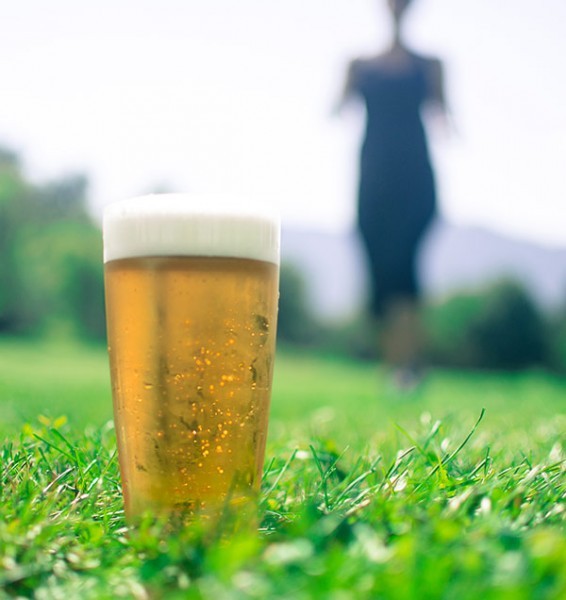 It’s time to clear up a major myth about the bodies of beer drinkers: The “beer belly” is bunk! Ironically, as much as the terms ‘beer’ and ‘fat’ are mentioned together, beer does not even contain fat.
It’s time to clear up a major myth about the bodies of beer drinkers: The “beer belly” is bunk! Ironically, as much as the terms ‘beer’ and ‘fat’ are mentioned together, beer does not even contain fat.
Say what!?
That’s right. Beer is fat-free, people!
Like all fermented beverages, beer contains calories…but not fat. Yet I don’t hear anyone talking about a “wine belly” or “bourbon belly”. So why, you may ask, does beer get such a bad rap?
Anyone who spends time in the craft brewing community knows that brewers and beer lovers come in all shapes and sizes, including folks like me who weigh less than a hundred pounds in a wet towel despite tasting beer every day.
My rule of thumb is to practice moderation and follow a healthy and balanced lifestyle. And science is with me on this. A review of the evidence on alcohol and weight gain, published earlier this year, found that it’s binge drinking—not moderate consumption—that leads to obesity.
As with all good things, too much can be, well, too much…but just enough is oh-so-worth it and rewarding.
What is fat, anyway?
Fat is a nutrient and fuel that gives us energy. It comes in many forms—animal and vegetable, saturated and unsaturated—and is contained in many of the foods we eat. (But remember, it’s not in beer!)
Saturated fats come mostly from animals, like the fat marbled through a cut of meat or the fats in milk and dairy foods. A few vegetable fats are saturated, too, like coconut and palm oil. Most other plant-based oils are unsaturated, as are most of the fats from fish, nuts, and fruits and vegetables like avocados.
Wherever fats come from, they are a high-calorie food. But fat is not the only source of calories. Calories also come from protein and carbohydrates. And in the case of beer, one important carbohydrate is alcohol.
In general, when it comes to weight gain, it’s not how much fat you eat that matters—it’s how many calories you take in, versus how many you use up. However, alcohol does have an effect on the way different kinds of calories are processed. That’s because alcohol is your body’s favorite short-term energy source, explains obesity researcher Michael Jensen in an article at WebMD.com. “When you drink alcohol, the liver burns alcohol instead of fat,” says Jensen. That means fat is pushed aside and burned later, post-alcohol. But again, this effect isn’t specific to beer. And no matter where your calories come from, if your body isn’t in need of immediate energy, it will store those calories for later by converting them to fat.
The calories in any fermented beverage depend on the carbohydrates it contains, in the form of alcohol and residual sugars, as well as the serving size. A beer like Sam Adams Boston Lager, one of the top-selling beers from a small and independent craft brewer, has 175 calories in a 12-ounce bottle, and is 4.9 percent alcohol. Compare that to WineFolly.com’s breakdown of a typical glass of dry wine: just six ounces, but at 15 percent alcohol it contains the same 175 calories!
In other words: The higher the alcohol content, the higher the calories. So you can think of beer as the beverage of moderation in terms of your weight—it will fill your stomach, but it won’t bulk up your belly any more than wine or liquor will.
So let’s stop blaming our body fat on the occasional craft beer—there’s a lot more at work in our diets and lifestyles. To avoid a belly, strive for balance.
comments and from CraftBeer